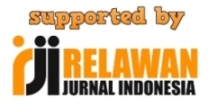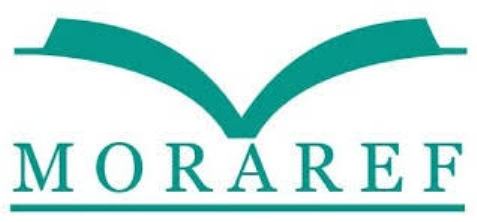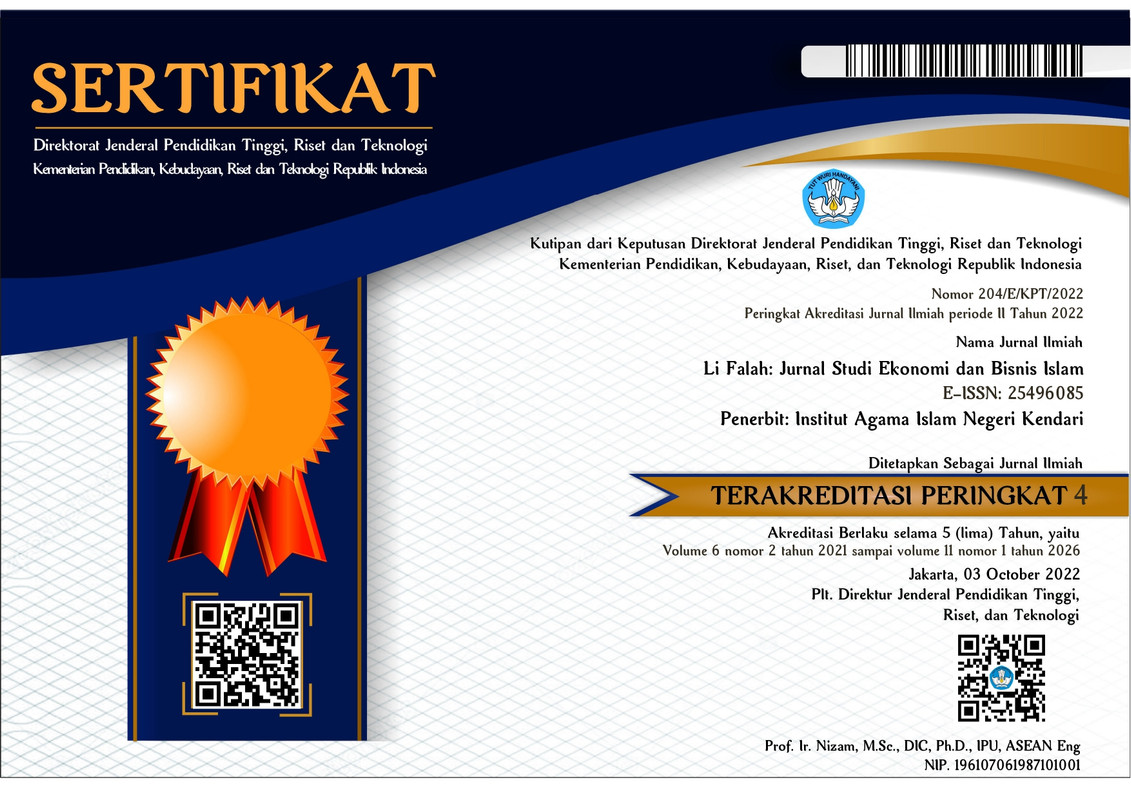Raising private finance for public infrastructure in Sub-Saharan Africa: Exploring Infrastructure Mutual Funds and Islamic Finance
Abstract
Sub-Saharan Africa (SSA) lags other regions of the world as far as critical infrastructure is concerned. Even though the region has great potential, the governments in the region are constrained by budget deficits and competing demands for state resources. With limited access to foreign finance for private sector-led infrastructure procurement in most economies in SSA, this article examines how innovative financial products can be developed to unlock domestic finance for infrastructure. The article adopts a law and development approach. The article recommends the development of infrastructure mutual funds and Islamic finance as alternative sources for infrastructure finance in SSA. This recommendation is based on Prof YS Lee's adaptability to socioeconomic conditions theory.
Keywords
Full Text:
PDFReferences
Adam, I. O., Musah, A., & Ibrahim, M. (2017). Putting the cart before the horse? Re-examining the relationship between domestic savings and economic growth in selected Sub-Saharan African countries. Journal of African Business, 18(2), 102-123. doi:10.1080/15228916.2016.1225472
Aims. (2021). Islamic investment and mutual funds. Retrieved January 5, 2022, from Aims: https://aims.education/islamic-investment-funds-and-islamic-mutual-funds/
Airey, S., & Toufayan, M. (2022). Encounters of law, governance and development and the question of form. Canadian Journal of Development Studies / Revue canadienne d'études du développement, 1-19. doi:10.1080/02255189.2022.2029735
Akisik, O. (2020). The impact of financial development, IFRS, and rule of LAW on foreign investments: A cross-country analysis. International Review of Economics & Finance, 69, 815-838. doi:10.1016/j.iref.2020.06.015
Alasuutari, P., & Qadir, A. (2013). Epistemic governance: an approach to the politics of policy-making. European Journal of Cultural and Political Sociology, 1(1), 67-84. doi:10.1080/23254823.2014.887986
Anago, C. J. (2021). Financing long-term infrastructure post-COVID-19: Are pension funds an option for Africa? Journal of Sustainable Finance & Investment, 1-25. doi:10.1080/20430795.2021.1891779
Arbouch, M., Canuto, O., & Vazquez, M. (2020, December 10). Africa's infrastructure finance. Retrieved May 10, 2022, from Resilient Infrastructure Financing: https://www.g20-insights.org/policy_briefs/africas-infrastructure-finance
Arimoro, A. (2018). An appraisal of the framework for public-private partnership in South Africa. European Procurement & Public Private Partnership Law Review, 214-228.
Arimoro, A. E. (2019). Institutional framework for public-private partnerships in Nigeria: is it a case of too many cooks for one pot of broth? Business Law Review, 40(2), 73-79. Retrieved from https://kluwerlawonline.com/journalarticle/Business+Law+Review/40.2/BULA2019010
Arimoro, A. E. (2022). Private sector investment in infrastructure in Sub-Saharan Africa post-COVID-19: the role of law. Public Works Management & Policy, 27(2), 108-126. doi:10.1177/1087724X211059531
Assefa, T. A., & Mollick, A. V. (2017). Financial development and economic growth in Africa. Journal of African Business, 18(3), 320-339. doi:10.1080/15228916.2017.1301162
Azolibe, C. B., & Okonkwo, J. J. (2020). Infrastructure development and industrial sector productivity in Sub-Saharan Africa. Journal of Economics and Development, 22(1), 91-109. doi:10.1108/JED-11-2019-0062
Badu, E., Owusu-Manu, D.-G., Edwards, D. J., & Holt, G. D. (2011). Innovative financing (IF) of infrastructure projects in Ghana: conceptual and empirical observations. Engineering Project Organization Journal, 1(4), 255-268. doi:10.1080/21573727.2011.597744
Basedau, M., & Schaefer-Kehnert, J. (2019). Religious discrimination and religious armed conflict in sub-Saharan Africa: an obvious relationship? Religion, State and Society, 47(1), 30-47. doi:10.1080/09637494.2018.1531617
Beecher, J. A. (2021, January 15). Funding and financing to fund public infrastructure: why choices matter. Retrieved November 17, 2021, from SSRN: https://poseidon01.ssrn.com/delivery.php?ID=2341030740960061141241121240311171170070630810590350511220251150220751111050021180810410180960390400350320051210261251020710741070340250840500940310690271220070180190230490120210850670020751210650140850660050700
Berg, C. N., Blankespoor, B., & Selod, H. (2018). Roads and rural development in Sub-Saharan Africa. The Journal of Development Studies, 54(5), 856-847. doi:10.1080/00220388.2018.1430772
Berger, G. (2010). Reflections on Governance: Power Relations and Policy Making in Regional Sustainable Development. Journal of Environmental Policy & Planning, 5(3), 219-234. doi:10.1080/1523908032000154160
Blimpo, M. P., & Cosgrove-Davies, M. (2019). Electricity Access in Sub-Saharan Africa. Washington: World Bank.
Bradlow, D. D. (2015). Southern African governments, multilateral development banks, non-state actors, and sustainable infrastructure: Managing changing relationships. South African Journal of International Affairs, 22(3), 289-305. doi:10.1080/10220461.2015.1087874
Burton, K. (2021, October 22). Sub-Saharan Africa has a huge electricity problem – but with challenge comes opportunity. Retrieved December 31, 2021, from Geographical: https://geographical.co.uk/people/development/item/4180-sub-saharan-africa-has-an-electricity-problem-how-can-governments-fix-it
Calderón, C., Cantú, C., & Chuhan-Pole, P. (2018). Infrastructure development in Sub-Saharan Africa: A scorecard. Washington: The World Bank Group.
Calitz, E., & Fourie, J. (2010). Infrastructure in South Africa: who is to finance and who is to pay? Development Southern Africa, 27(2), 177-191. doi:10.1080/03768351003740449
Cerda, R., Fuentes, R., García, G., & Llodrá, J. I. (2020). Understanding domestic savings: an empirical approach. Applied Economics, 52(9), 905-928. doi:10.1080/00036846.2019.1646871
Cirolia, L. R. (2020). Fractured fiscal authority and fragmented infrastructures: Financing sustainable urban development in Sub-Saharan Africa. Habitat International, 104. doi:10.1016/j.habitatint.2020.102233
Collier, P., & Cust, J. (2015). Investing in Africa's infrastructure: financing and policy options. Annual Review of Resource Economics, 7, 473-493. Retrieved from http://www.jstor.org/stable/44866126
Costa-Font, J., Giuliano, P., & Ozcan, B. (2018, September 12). The cultural origin of saving behaviour. Plus One, 1-10. doi:10.1371/journal.pone.0202290
Current Affairs ZA. (2022, February 16). New regulations to allow pension funds to invest more in infrastructure projects. Retrieved May 2, 2022, from Current Affairs ZA: https://currentaffairsza.com/2022/02/16/new-regulations-to-allow-pension-funds-to-invest-more-in-infrastructure-projects/
Daka, T. (2017, October 4). Osinbajo launches a 60-day action plan on ease of doing business. Retrieved January 6, 2022, from The Guardian: https://guardian.ng/business-services/osinbajo-launches-60-day-action-plan-on-ease-of-doing-business/
Donghyun, P., & Doughyun, N. (1998). Savings and development: some important lessons from Korea. Savings and Development, 22(4), 415-433. Retrieved from http://www.jstor.org/stable/25830669
D'Souza, R. (2022). A radical turn in International Law and Development? Corporations, capitalist states and imperial governance. Canadian Journal of Development Studies / Revue canadienne d'études du développement, 43(1), 20-38. doi:10.1080/02255189.2022.2027232
Economist Impact. (2021). Untapped opportunity: deepening trade and investment between sub-Saharan Africa and the GCC. Retrieved December 31, 2021, from Economist Impact: https://impact.economist.com/perspectives/sites/default/files/ei-dcci_africa_7th_october_-_web-final.pdf
Eyraud, L., Pattillo, C., & Selassie, A. A. (2021, August 16). How to attract private finance to Africa’s development. Retrieved January 3, 2022, from WorldBankBlogs: https://blogs.worldbank.org/ppps/how-attract-private-finance-africas-development
Flora, H., & Yeung, H. (2018). Law-finance-growth nexus in the context of Africa. Law and Development Review, 11(2), 513-555. doi:10.1515/ldr-2018-0028
Freshfields Bruckhaus Deringer. (2021, July 21). A legal framework for impact. Retrieved January 6, 2022, from Freshfields Bruckhaus Deringer: https://www.freshfields.com/en-gb/our-thinking/campaigns/a-legal-framework-for-impact/
Gakunu, P. (2007). Reforming the financial system in sub-Saharan Africa: the (long) way ahead. doi: 10.3917/FBC.028.0139
Gbadegesin, J. T., Ojekalu, S., Komolafe, O. M., & Oyewole, M. O. (2020). Underlying factors for effective collective decision on community-driven infrastructure in developing countries. International Journal of Construction Management, https://doi.org/10.1080/15623599.2020.1768325. doi:10.1080/15623599.2020.1768325
Ghebremusse, S. (2019). Application of Y.S. Lee’s General Theory of Law and Development to Botswana. Law and Development Review, 12(2), 403-424. doi:10.1515/ldr-2019-0017
Ginting, B., Sembiring, R., Siregar, M., & Abduh, A. (2017). The role of law in economic development: to develop a special economic zone to build a national and regional economy. Proceedings of MICoMS 2017. 1, pp. 209-214. Emerald. doi:10.1108/978-1-78756-793-1-00012
Giordano, T., Losch, B., Minsat, A., & Solignac-Lecomte, H.-B. (2015). Unlocking the potential of African regions. In J.-P. Stijns, & D. Revoltella, Recent Trends in Banking in sub-Saharan Africa (pp. 87-106). Luxembourg: European Investment Bank. Retrieved January 4, 2022, from https://www.eib.org/attachments/efs/economic_report_banking_africa_from_financing_to_investment_en.pdf
Girishankar, N. (2009). Innovating development finance: from financing sources to financial solutions. Washington DC: The World Bank. Retrieved May 5, 2022, from https://documents1.worldbank.org/curated/en/796631468340177673/pdf/WPS5111.pdf
Gnanasekar, I. F., & Malini, R. (2015). Performance of selected dividend infrastructure mutual fund schemes. International Journal of Advanced Research in Management and Social Sciences, 4(12), 73-86. Retrieved May 4, 2022, from https://garph.co.uk/IJARMSS/Dec2015/8.pdf
Goodfellow, T. (2020). Finance, infrastructure and urban capital: the political economy of African 'gap-filling'. Review of African Political Economy, 47(160), 256-274. doi:10.1080/03056244.2020.17222088
Gray, G. (1987). Privatisation: an attempt that failed. Politics, 22(2), 15-28. doi:10.1080/00323268708402027
Hassan, H. A. (2022). The securitisation of COVID-19 in Africa: Socio-economic and political implications. African Security Review, 31(1), 19-32. doi:10.1080/10246029.2021.1994438
Horvat, T., Bendix, H., Bobek, V., & Skoko, H. (2021). Impacts of investments in infrastructure projects on emerging markets’ growth: the case of East African countries. Economic Research-Ekonomska Istraživanja, 34(1), 2135-2161. doi:10.1080/1331677X.2020.1860799
Hsueh, C.-M., & Chang, L.-M. (2017). Critical success factors for PPP infrastructure: a perspective from Taiwan. Journal of the Chinese Institute of Engineers, 40(5), 370-377. doi:10.1080/02533839.2017.1335619
Jones, S. L., Walsh, J. T., & Appiah-Opoku, S. (2016). Rural transport health and safety in sub-Saharan Africa: Online survey snapshot of expert opinion. Development Southern Africa, 677-702. doi:10.1080/0376835X.2016.1203763
Josa, O. S., & Magrinyà, F. (2018). Patchwork is an interconnected world: the challenges of transport networks in Sub-Saharan Africa. Transport Reviews, 710-736. doi:10.1080/01441647.2017.1414899
Joseph, R. M. (2018). How principles of Sharia Law could encourage savings by America's poor. Penn Journal of Law & International Affairs, 6(1), 266-289. Retrieved January 6, 2022, from https://elibrary.law.psu.edu/cgi/viewcontent.cgi?article=1183&context=jlia
Kato, R. L. (2021, October 5). What will it take to fill Africa's growing infrastructure deficit? Retrieved May 3, 2022, from Africa News: https://www.africanews.com/2021/10/05/what-will-it-take-to-fill-africa-s-growing-infrastructure-deficit//#:~:text=The%20African%20Development%20Bank%20estimates,money%20is%20to%20be%20mobilized.
Keohane, G. L., & Madsbjerg, S. (2016). The innovative finance revolution: private capital for the public good. Foreign Affairs, 95(4), 161-170. Retrieved May 5, 2022, from https://www.jstor.org/stable/43946942?casa_token=Dn6rB94zupAAAAAA%3AsjH1hRuiPfOs6e-Vbj-ksi3PS0GbEszdzUZBbqCxS8DwIz-0pA6aLRMyOqFJyBhcUoOayvvbhEQizpcmRCyH2DLE3uqY0kSo2PW3LSDVUuAmRIFLbw&seq=2
Kirwan, R. (1990). Infrastructure finance: aims, attitudes and approaches. Urban Policy and Research, 8(4), 185-193. doi:10.1080/08111149008551444
Kodongo, O., & Ojah, K. (2016). Does infrastructure explain economic growth in Sub-Saharan Africa? Review of Development Finance, 6(2), 105-125. doi:10.1016/j.rdf.2016.12.001
Kuhn, B. M. (2022). Sustainable finance in Germany: mapping discourses, stakeholders, and policy initiatives. Journal of Sustainable Finance & Investment, 497-524. doi:10.1080/20430795.2020.1783151
Kuru, K., & Artan, D. (2020). A canvas model for risk assessment and performance estimation in public-private partnerships. International Journal of Construction Management, 20(6), 704-719.
Lakmeeharan, K., Manji, Q., Nyairo, R., & Poeltner, H. (2020, March 6). Solving Africa's infrastructure paradox. Retrieved May 10, 2022, from McKinsey & Company: https://www.mckinsey.com/business-functions/operations/our-insights/solving-africas-infrastructure-paradox
Lee, Y.-S. (2017). General theory of law and development. Cornell International Law Journal, 50, 415-471. Retrieved from https://ww3.lawschool.cornell.edu/research/ILJ/upload/Lee-final.pdf
Lee, Y.-S. (2022). Law and Development: Theory and Practice (2nd ed.). New York, London: Routledge.
Lisinge, R. T. (2020). The belt and road initiative and Africa's regional infrastructure development: implications and lessons. Transnational Corporations Review, 12(4), 425-438. doi:10.1080/19186444.2020.1795527
Macomber, J., & Armerding, P. T. (2018). Infrastructure in Nigeria: Unlocking pension fund investments. Retrieved May 2, 2022, from Harvard Business School HBS Case Collection: https://www.hbs.edu/faculty/Pages/item.aspx?num=54159
Masuku, S., & Macheka, T. (2021). Policymaking and governance structures in Zimbabwe: examining their efficacy as a conduit to equitable participation (inclusion) and social justice for rural youths. Cogent Social Sciences, 7(1), https://doi.org/10.1080/23311886.2020.1855742. doi:10.1080/23311886.2020.1855742
Mlachila, M., Park, S. G., & Yabara, M. (2013, January). Banking in sub-Saharan Africa: the macroeconomic context. In P. de Lima, S. Zajc, A. Schumacher, & R. Schmitz, Banking in sub-Saharan Africa: Challenges and Opportunities (pp. 7-25). Luxembourg: European Investment Bank. Retrieved January 4, 2022, from European Investment Bank: https://www.eib.org/attachments/efs/economic_report_banking_africa_en.pdf
Moreno, D., & Rodríguez, R. (2013). Optimal diversification across mutual funds. Applied Financial Economics, 23(2), 119-122. doi:10.1080/09603107.2012.711939
Möykkynen, H., & Pantelias, A. (2021). Viability gap funding for promoting private infrastructure investment in Africa: views from stakeholders. Journal of Economic Policy Reform, 24(2), 253-269. doi:10.1080/17487870.2020.1785296
Munemo, J. (2012). Business regulations and private domestic investment in Africa. Journal of African Business, 13(2), 157-164. doi:10.1080/15228916.2012.693447
Mutiiria, O. M., Ju, Q., & Dumor, K. (2020). Infrastructure and inclusive growth in sub-Saharan Africa: An empirical analysis. Progress in Development Studies, 20(3), 187-207. doi:10.1177/1464993420927507
Nyikos, G., & Ermasova, N. (2021). Public capital infrastructure management: cases of Germany, Hungary and the USA. International Journal of Public Administration, 1-25. doi:10.1080/01900692.2021.1925910
OECD. (2015). Infrastructure financing instruments and incentives. Washington: OECD.
Ojo, A. E. (2020). Sustainable infrastructure for Nigeria’s sustainable economic development: whether transportation or electric power supply? Journal of Mega Infrastructure & Sustainable Development, https://doi.org/10.1080/24724718.2021.2012364. doi:10.1080/24724718.2021.2012364
Okoboi, F. E. (2020, August 10). Investing in Africa and emerging markets. Retrieved May 3, 2022, from East African Development Bank: https://www.eadb.org/news-events/investing-in-africa-and-emerging-markets#.
Paterson-Jones, N. G. (2019). Tackling Europe's infrastructure needs: the European Fund for strategic investments. Journal of Mega Infrastructure & Sustainable Development, 1(1), 54-78. doi:10.1080/24724718.2019.1594567
Pollio, A. (2021). Reading development failure: experts and experiments at the bottom of the pyramid in Cape Town. Third World Quarterly, 42(12), 2974-2992. doi:10.1080/01436597.2021.1983425
Porter, G. (2014). Transport services and their impact on poverty and growth in rural sub-Saharan Africa: a review of recent research and future research needs. Transport Reviews, 34(1), 25-45. doi:10.1080/01441647.2013.865148
Pottas, A. (2021). Addressing Africa's infrastructure challenges. Retrieved December 31, 2021, from Delloite: https://www2.deloitte.com/content/dam/Deloitte/global/Documents/Energy-and-Resources/dttl-er-power-addressing-africas-infrastructure-challenges.pdf
Puri, H. S. (2010). Rise of the Global South and its impact on South-South cooperation. Washington DC: The World Bank. Retrieved May 5, 2022, from https://openknowledge.worldbank.org/bitstream/handle/10986/6076/deor_12_2_7.pdf
Salami, I. (2011). Financial regulation in African frontier markets: Law and Financial Markets Review, 5(5), 380-387. doi:10.5235/175214411797474231
Sandor, E. (2011). Mapping innovative finance for development mechanisms. OECD. doi:10.1787/gen_papers-2010-5kgc6cl2x95d
Setyowati, A. B. (2020). Governing sustainable finance: insights from Indonesia. Climate Policy, 1-14. doi:10.1080/14693062.2020.1858741
Singh, N. (2022, January 4). Growth of Islam In Sub-Saharan Africa: 2010 To 2030. Retrieved May 4, 2022, from International Centre for Education and Training: https://icetonline.com/growth-of-islam-in-sub-saharan-africa-2010-to-2030/
Soyeju, O. (2017). Mitigating risks in Nigeria's project finance market. African Journal of International and Comparative Law, 442-455. doi:10.3366/ajicl.2017.0204
Spohr, J., Wikströma, K., & Eriksson. (2022). Towards collaborative infrastructure procurement. Public Money & Management, 42(4), 274-283. doi:10.1080/09540962.2021.1905267
The World Bank. (2021). Access to infrastructure finance. Retrieved November 17, 2021, from PPIAF: https://ppiaf.org/pillar/access-infrastructure-finance
The World Bank. (2017). Mobilizing Islamic finance for infrastructure public-private partnerships. Washington: The World Bank.
The World Bank. (2020). Sub-Saharan Africa. Retrieved May 4, 2022, from The World Bank: https://databank.worldbank.org/data/download/poverty/33EF03BB-9722-4AE2-ABC7-AA2972D68AFE/Global_POVEQ_SSA.pdf
Thistlethwaite, J. (2014). Private governance and sustainable finance. Journal of Sustainable Finance & Investment, 4(1), 61-75. doi:10.1080/20430795.2014.887348
Timmermans, F., & Birol, F. (2021, June 17). Time to make energy poverty in Africa a thing of the past. Retrieved January 1, 2022, from Aljazeera: https://www.aljazeera.com/opinions/2021/6/17/time-to-make-energy-poverty-in-africa-history
Traore, Y., Muchie, M., & Worku, Z. (2020). South African ambitious investment objectives: The current foreign direct investment determinants in South Africa. African Journal of Science, Technology, Innovation and Development, 14(1), 31-48. doi:10.1080/20421338.2020.1800942
United Nations Commission on International Trade Law. (2001). UNCITRAL Legislative Guide on Privately Financed Infrastructure Projects. New York, New York, United States of America: United Nations.
Vorster, L. P. (1985). Indigenous law and development. Development Southern Africa, 2(1), 38-43. doi:10.1080/03768358508439121
Weiss, J. (1998). Cost-benefit analysis and assessing privatisation projects in transitional economies. Impact Assessment and Project Appraisal, 16(4), 289-294. doi:10.1080/14615517.1998.10600139
Wethal, U. (2019). Building Africa's infrastructure: reinstating history in infrastructure debates. Forum for Development Studies, 46(3), 473-499. doi:10.1080/08039410.2019.1616609
Zeidan, R. (2022). Obstacles to sustainable finance and the covid19 crisis. Journal of Sustainable Finance & Investment, 12(2), 525-528. doi:10.1080/20430795.2020.1783152
DOI: http://dx.doi.org/10.31332/lifalah.v7i1.4155
Copyright (c) 2022 Augustine Edobor Arimoro, Abba Amsami Elgujja, Abba Amsami Elgujja

This work is licensed under a Creative Commons Attribution-ShareAlike 4.0 International License.
Li Falah : Jurnal Studi Ekonomi dan Bisnis Islam, Indexed In
Accredited By
View My Stats
Organized by : Fakultas Ekonomi dan Bisnis Islam
Published by : Institut Agama Islam Negeri Kendari
Jl. Sultan Qaimuddin No. 17 Baruga Kota Kendari Provinsi Sulawesi Tenggara
phone. +62401-3193710
Fax. +62401-3193710
Email: [email protected]



















